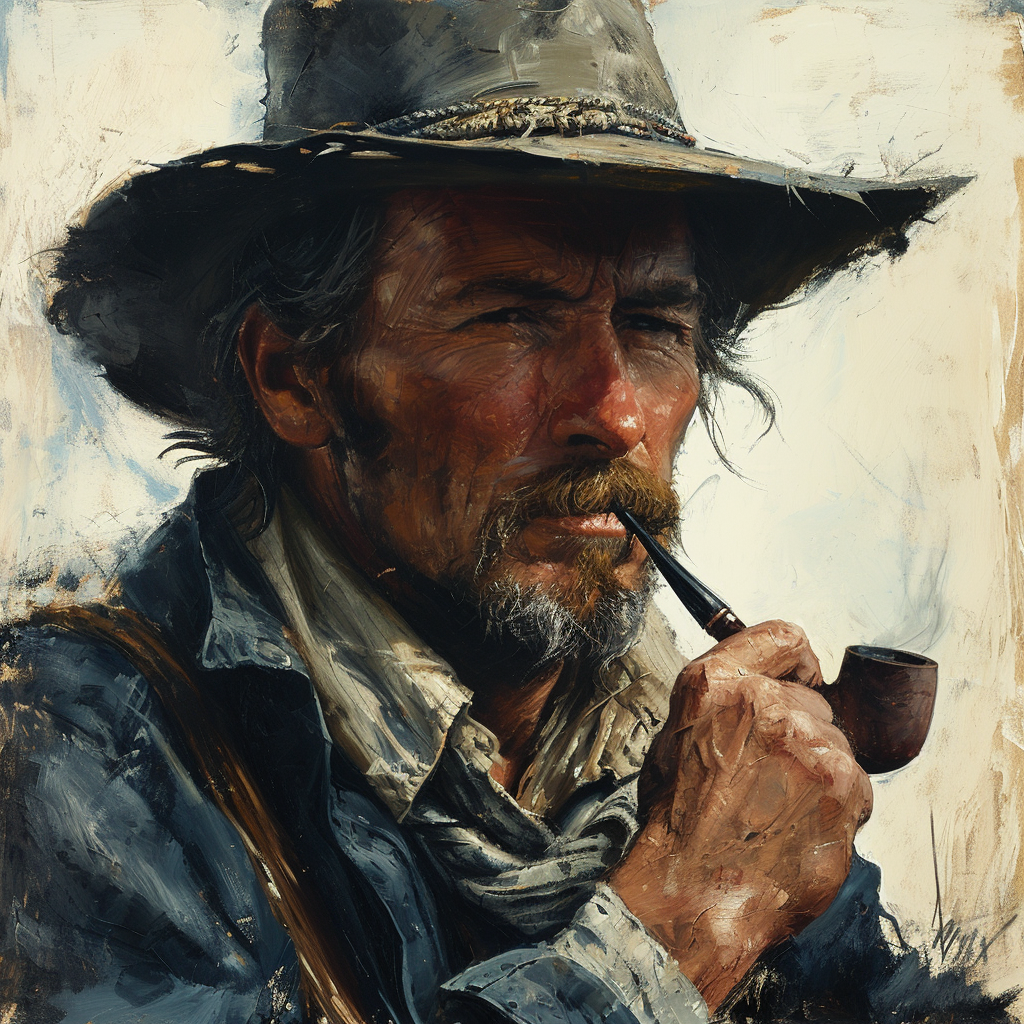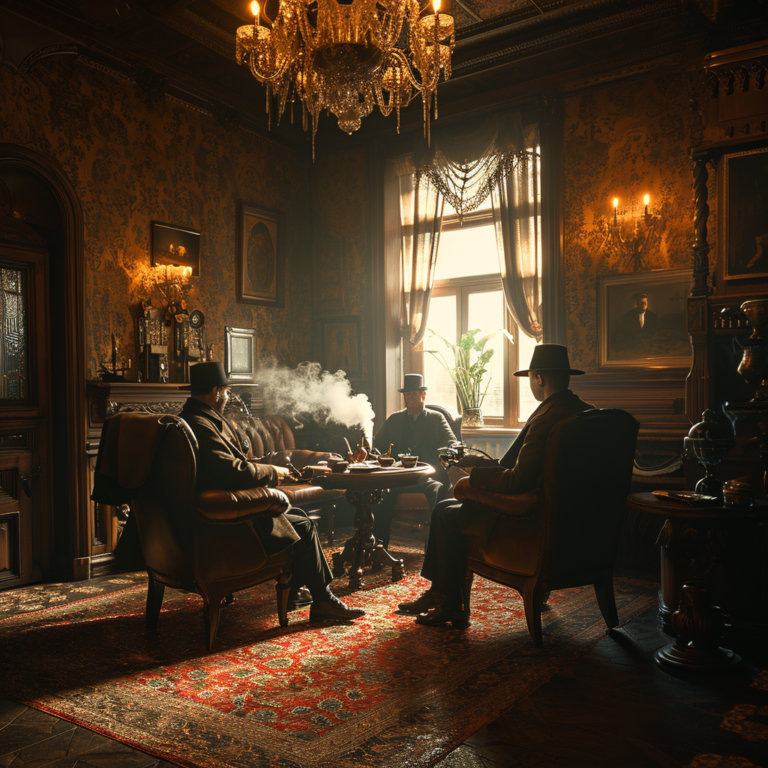New to pipe smoking? Get all the essential information you need to start your smoking experience, including pipe selection and care tips

My journey into the world of pipe smoking began somewhat unconventionally during my high school years, under the guidance of an intriguing character, Dr. Steele. He wasn’t just a teacher; he was a connoisseur of the finer things in life, and that included the art of pipe smoking. Dr. Steele had a way of making pipe smoking seem like an intellectual pursuit, a portal to a more contemplative and sophisticated world.
I vividly remember evenings spent in his company, enveloped in the rich aroma of his tobacco, as he shared stories about his day as a physician and books he was reading. It was more than just smoking; it was an experience, a ritual that seemed to slow down time and allow for deeper thinking.
Fast forward to my college years, I found myself purchasing my first pipe. It wasn’t just a spontaneous decision; it felt like a rite of passage. In my mind, college was a place where one explored and embraced such intellectual pursuits, and pipe smoking was emblematic of that. It felt like stepping into a tradition that many great minds before me had partaken in.
Now, years later, my encounters with my pipe are infrequent, but each session is a cherished experience. It’s not just about the act of smoking; it’s about the nostalgia, the ritual, and the rich, comforting aroma that takes me back to those afternoons with Dr. Steele. Each puff is a reminder of a journey that started with curiosity and grew into a nuanced appreciation of an age-old practice.
Getting Started
Choosing Your Pipe
Choosing the right pipe is a significant step in your pipe smoking journey. Pipes, crafted from various materials, each contribute uniquely to the smoking experience. The material, shape, and size of a pipe can significantly affect the flavor, temperature, and comfort of smoking.
Briar Pipes: Briar, derived from the root burl of the heath tree, is the most popular material for pipes due to its exceptional qualities. It’s known for its durability, heat resistance, and ability to absorb moisture. This results in a cooler, drier smoke. Briar pipes come in various shapes and sizes, catering to different preferences. They are appreciated for their ability to age well, often becoming better with us.
Corn Cob Pipes: For those looking for a budget-friendly option, corn cob pipes are a great choice. They are remarkably affordable and offer a surprisingly good smoking experience. Corn cobs provide a cool, dry smoke, and are lighter than briar pipes, making them comfortable for long periods of use. They are an excellent option for beginners or for trying new tobacco blends without the commitment of a more expensive pipe.
Meerschaum Pipes: Meerschaum, a mineral found in small deposits in Turkey, is revered for its purity and ability to provide a cool, dry, and flavorful smoke. These pipes are highly valued for their unique properties and intricate carvings. Meerschaum pipes are porous, gradually changing color as they age, which many smokers find appealing. They offer a pure tobacco flavor, unaltered by the pipe material.
Your choice of pipe depends on personal preference, budget, and the smoking experience you seek. Whether it’s the robustness of briar, the affordability of corn cobs, or the purity of meerschaum, each material offers something unique. As you embark on this delightful journey, consider what appeals most to you in terms of aesthetics, functionality, and the type of smoking experience you desire.
Selecting Your Tobacco
Selecting the right tobacco for your pipe is a deeply personal and essential part of the smoking experience. Your preference can evolve over time, influenced by various factors such as taste, aroma, and the pipe used. Here’s a guide to help you in this delightful exploration:
Understanding Tobacco Blends:
Aromatics: These are popular for their sweet, often fruity or spicy aromas. Perfect for those who appreciate a pleasant room note and milder flavor.
English Blends: Known for their natural tobacco flavors, English blends often contain Latakia, offering a smoky, rich taste.
Virginia: These are characterized by their natural sweetness and are often used as a base in many blends. Virginias can range from mild to strong, with flavors deepening as they age.

Tasting and Experimentation:
Visual Inspection: Begin by inspecting the cut, color, and texture of the tobacco. This initial assessment can give you an idea about its strength and burning characteristics.
Sampling Different Varieties: Visit a reputable tobacconist and explore different blends. The same tobacco can taste significantly different depending on the cut, moisture level, and the pipe you use.
Pairing with Your Pipe:
Matching with Pipe Material: The material of your pipe can influence the flavor of the tobacco. For instance, briar pipes can add a subtle woody note, while meerschaum pipes are known for their neutral influence on the tobacco’s flavor.
The Impact of Pipe Shape and Size: Different pipe shapes can affect the smoking temperature and, consequently, the taste of the tobacco. Experiment with various pipes to find the combination that suits your palate the best.
Personal Preference:
Ultimately, the ‘right’ tobacco is the one that you enjoy the most. Your taste may change over time, so keep an open mind and continue exploring different blends and combinations.
In conclusion, the journey to find your preferred tobacco blend is as rewarding as the smoking experience itself. Take your time, experiment with different types, and savor the journey of discovering what truly appeals to your palate.
The Art of Smoking a Pipe

Packing the Pipe
Properly packing your pipe is vital to ensure a pleasurable smoking experience. The objective is to achieve an even, slow burn, which allows the tobacco to release its full flavor and aroma. One of the most popular and effective techniques for achieving this is the “three-layer method.”
The Three-Layer Method:
- The First Layer (The Gravity Fill): Begin by lightly filling the pipe bowl with tobacco. Use a gentle touch, allowing the tobacco to fall naturally into the bowl without pressing it down. This layer should fill the bowl loosely to about one-third of its depth.
- The Second Layer (The Settle): Add more tobacco to the bowl, filling it to two-thirds full. Now, press it down gently but more firmly than the first layer. Aim to compress the tobacco to about half its original volume. This step starts to provide the structure needed for an even burn.
- The Third Layer (The Firm Pack): Fill the bowl to the brim with tobacco. Press this final layer down more firmly than the previous one, ensuring the tobacco is evenly compressed but not too tight. The goal is to create a surface that’s springy to the touch, allowing air to pass through when you draw on the pipe.
Tips for Perfect Packing:
- Even Pressure: Apply consistent pressure when packing each layer. Uneven packing can lead to hot spots and an uneven burn.
- Draw Test: Before lighting, do a draw test. A properly packed pipe should have a slight resistance, similar to drinking through a straw.
- Adjustment: If the draw feels too tight, gently loosen the tobacco. If it’s too loose, add a bit more tobacco and repack the top layer.
Remember, packing a pipe is an art that improves with practice. Each pipe and tobacco blend may require slight adjustments to this method. With time, you’ll develop a feel for the perfect pack, leading to a consistently enjoyable smoking experience
Lighting Up
Lighting a tobacco pipe correctly is an essential skill that enhances the smoking experience, ensuring an even burn and full flavor. The process requires patience and technique, with the choice of lighting tool and method being key factors.
Choosing the Right Lighting Tool:
- Soft Flame Lighters and Matches: Opt for a soft flame lighter or wooden matches. These provide a gentle heat that’s ideal for evenly lighting tobacco without risking damage to the pipe. The soft flame is less likely to scorch the bowl’s rim or alter the tobacco’s natural flavor.
- Avoid Torch Lighters: Torch lighters should be avoided as their intense heat can damage the pipe, especially if it’s made of briar or other sensitive materials. The high temperature of a torch can crack the wood and ruin the pipe’s finish.
The Lighting Process:
- The Charring Light (False Light): Begin with what’s known as the charring light. Apply the flame to the tobacco while moving it in circular motions over the surface. Take gentle puffs as you do this. The goal is to lightly char the top layer of the tobacco, preparing it for a more thorough light.
- Tamping and Relighting: After the charring light, gently tamp down the charred tobacco. This creates a flat surface that aids in an even burn. Following this, apply the flame again for the true light, ensuring that the tobacco is lit evenly across the bowl.
- Maintaining the Burn: During your smoke, you may need to relight the tobacco. This is normal, especially if you’re smoking slowly. Each relight should be as gentle as the initial lighting, using soft, steady puffs.
Additional Tips:
- Mind the Flame: Be careful not to let the flame touch the pipe’s rim directly, as this can cause burn marks.
- Puff Gently: During lighting and smoking, draw on the pipe gently. Aggressive puffing can cause the tobacco to burn too hot, affecting the flavor and your smoking experience.
In conclusion, mastering the lighting technique is key to a satisfying pipe smoking experience. By using the right tools and methods, you can ensure a slow, even burn that fully releases the tobacco’s flavors.
The Smoking Experience
The smoking experience of a pipe is both an art and a pleasure, deeply rooted in tradition and technique. To ensure an enjoyable and relaxing session, the way you smoke your pipe is as crucial as the quality of the pipe and tobacco you use.
Slow and Gentle Draws: The key to a satisfying pipe smoking experience is to take slow, gentle draws. Smoking too quickly can cause the pipe to overheat, leading to a harsh and unpleasant smoke. This overheating not only affects the taste but can also damage the pipe itself by causing the briar to crack or burn you.
Cool Smoke: Ideally, the smoke should be cool and pleasant. This can be achieved by maintaining a steady, moderate pace. Puffing too hard and fast will increase the temperature of the smoke, making it harsh and potentially irritating to the throat and palate.

Rhythm and Patience: Develop a rhythm that allows the tobacco to smolder at an even pace. This rhythm is typically found with experience and patience. It’s about finding a balance between keeping the tobacco lit and not overheating the pipe.
Tamping and Relighting: Use your tamper to gently press down the ash and unburnt tobacco. This action helps maintain an even burn and allows for easier relighting if needed. Be careful not to apply too much pressure, as this can compress the tobacco too much, restricting airflow.
Mindful Smoking: Be present and mindful during your smoking session. Appreciate the aroma, the taste, and the relaxation that comes with pipe smoking. This isn’t just about consuming tobacco; it’s about savoring a moment of calm in your day.
Avoid Inhaling Deeply: Unlike cigarette smoking, pipe smoking is more about savoring the flavor in your mouth rather than inhaling deeply into your lungs. This method reduces the harshness and allows you to fully enjoy the subtleties of the tobacco’s flavor.
In summary, the essence of a good pipe smoking experience lies in taking your time, enjoying each puff, and respecting the natural pace at which the tobacco burns. Embrace this time-honored ritual, and let it be a peaceful, reflective, and enjoyable part of your day.
Maintenance and Care
Maintaining a clean pipe is essential for ensuring a great smoking experience and prolonging the life of your pipe. Regular cleaning not only preserves the flavor of the tobacco but also prevents the buildup of residue, which can affect the pipe’s performance and taste. Here’s a guide to effectively clean your pipe:

Daily Cleaning:
After each use, allow your pipe to cool down before cleaning.
Gently remove any remaining ash and tobacco from the bowl.
Run a pipe cleaner through the stem to the bowl to absorb moisture and remove residue. This step is crucial to prevent moisture buildup, which can lead to unpleasant odors and taste.
Weekly Maintenance:
Disassemble your pipe, if possible, to clean each part thoroughly.
Use pipe cleaners and cotton swabs to clean the bowl, stem, and shank. Focus on removing any tar and residue that may have built up over time.
For the stem, especially if it’s made of vulcanite, which can oxidize and turn bitter, a gentle wipe with a soft cloth and a mild cleaner can help maintain its condition.
Deep Cleaning (Monthly or As Needed):
Occasionally, your pipe will require a more thorough cleaning.
For a deeper clean, soak the stem in a solution of warm water and mild detergent. Avoid soaking the wooden bowl as it can cause damage.
For the bowl, use a pipe reamer to gently scrape away any excess cake (the layer of carbonized tobacco) that’s built up on the inside. This should be done carefully to avoid damaging the bowl.
After scraping, use a shank brush or pipe cleaners dipped in alcohol or a pipe-specific cleaning solution to clean the inside of the bowl and shank. Ensure that all the alcohol or cleaner is completely removed before the next use.
Let all parts dry completely before reassembling your pipe.
General Tips:
Avoid using harsh chemicals or abrasive materials that can damage the pipe.
For pipes made of materials like meerschaum or clay, follow specific cleaning instructions as they require different care than briar or corn cob pipes.
Regular cleaning and maintenance not only enhance your smoking experience but also turn pipe care into a satisfying ritual, adding to the overall enjoyment of pipe smoking.
Tips and Tricks
Do’s and Don’ts
- Do keep your tobacco dry for a better smoking experience.
- Do not inhale the smoke; pipe smoking is about savoring the flavor.
- Do keep your pipe clean and dry.
Do not tap your pipe too hard when emptying it, as this can damage the bowl.

Conclusion
Pipe smoking is more than just a pastime; it’s an art form that requires patience and practice. As you embark on this journey, take your time to savor each moment, from packing your pipe to the last puff of smoke. Happy smoking!
As with any form of smoking, be aware of the health implications. Enjoy your pipe smoking in moderation, and ensure you smoke in a well-ventilated area.


